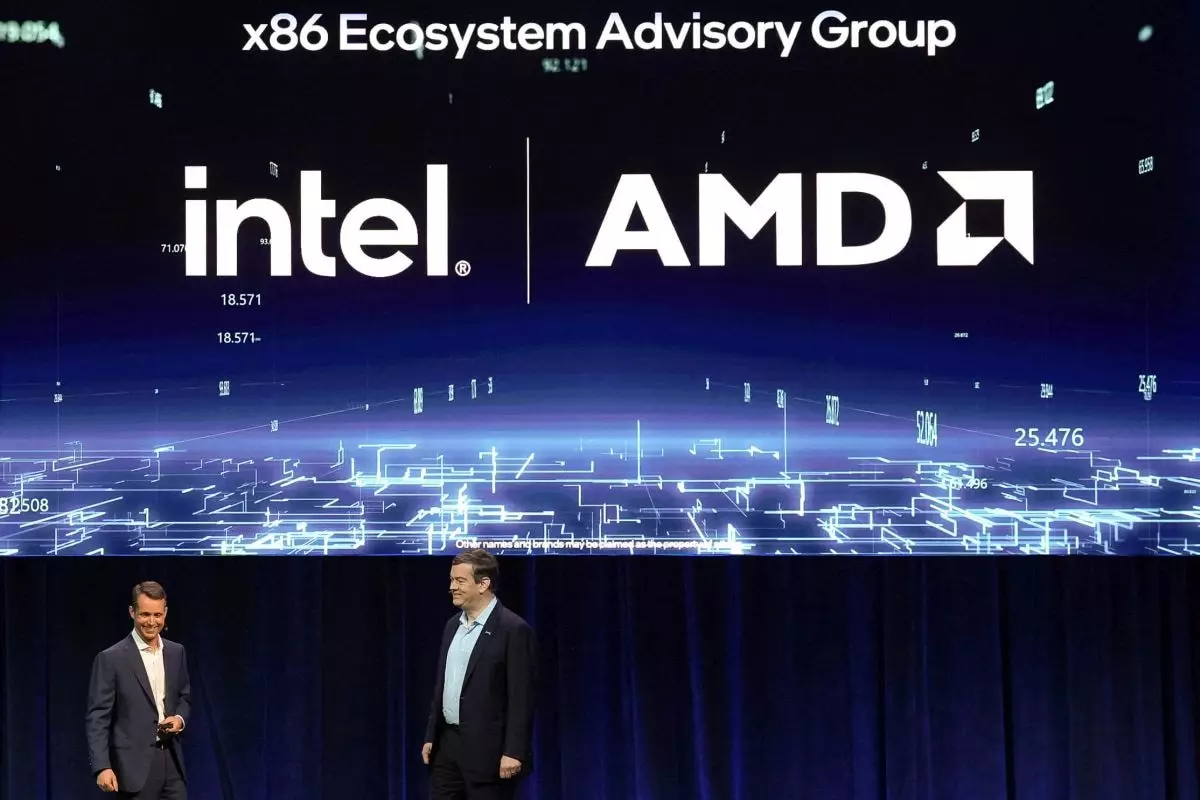In a groundbreaking development in the semiconductor industry, Intel and AMD, long-standing competitors, have embarked on a partnership designed to reshape the x86 ecosystem. Announced at the OCP Global Summit in California, this collaborative effort centers around the formation of an x86 Ecosystem Advisory Group. This initiative aims to not only bolster the longstanding x86 architecture but also to provide a unified approach to software compatibility, a critical feature that is increasingly imperative as competition from Arm-based processors escalates.
Despite their rivalry in the market, both Intel and AMD recognize the urgent need to maintain the x86 architecture’s relevance in the face of growing competition. The goal is to establish a collaborative environment that encourages the development of software optimized for x86 architectures, enhancing compatibility across devices powered by AMD and Intel chips. This move could signify a pivotal evolution in the industry, particularly as Arm processors gain traction with their unique strengths in software compatibility.
The shift towards Arm architecture has not gone unnoticed in the industry. Companies such as Apple and various Android manufacturers have increasingly integrated Arm processors due to their efficiency and performance advantages. With Arm’s market share expanding, Intel and AMD face pressure to innovate and adjust. Recent success stories like Apple’s M-series chips highlight the advantages of Arm-based design, which offer compelling performance metrics essential for modern computing demands.
Market dynamics suggest that the x86 architecture, which has been dominant since its burgeoning in the late 20th century, risks falling out of favor without strategic maneuvering. Arm’s market capitalization in server technology alone demonstrated significant growth, with projections indicating a compound annual growth rate of 14.3 percent through 2030. This competitive threat serves as the backdrop for Intel and AMD’s collaboration—a response to the necessity of evolving their approach while continuing to lead in a rapidly changing technological environment.
The primary goals of the newly formed x86 Ecosystem Advisory Group entail establishing compatibility across processors from both Intel and AMD. By pooling resources and insights from multiple stakeholders—including major industry players such as Dell, Google, Microsoft, and Oracle—the group seeks to create a “more unified set of instructions and architectural interfaces.” This can provide a critical foundation for software developers, facilitating a smoother and more efficient development process, thereby promoting a healthier development ecosystem for x86 architecture.
Furthermore, the involvement of significant figures such as Linux creator Linus Torvalds and Epic Games CEO Tim Sweeney within the advisory group signals a commitment to bridging both hardware and software communities. Their expertise will undoubtedly contribute to fortifying the x86 architecture and fostering innovation.
Despite the promising prospects of this partnership, the road ahead is fraught with challenges. Achieving consensus among diverse stakeholders with varying priorities and interests can be a daunting task. Additionally, Intel and AMD must navigate the intricacies of their competitive relationship while fostering collaboration. The balance of competition and cooperation will be crucial as they embark on this unprecedented journey.
However, successful execution of the advisory group’s objectives could usher in a new era for x86 architecture. It presents an opportunity not only to enhance software compatibility across a wide range of devices—spanning PCs, data centers, and cloud applications—but also to accelerate the adoption of innovative technologies. A unified platform could indeed become a cornerstone for both enterprises and individual users, satisfying the evolving expectations of technology consumers.
As the semiconductor industry stands on the brink of transformation, the partnership between Intel and AMD represents a bold step towards revitalizing the x86 architecture. By fostering collaboration among key industry players, this initiative not only seeks to address immediate competitive pressures but also aims to lay the groundwork for sustained innovation and growth. With a concerted effort to prioritize compatibility, scalability, and customization, the x86 Ecosystem Advisory Group could indeed mark the beginning of a new chapter—one that reaffirms the x86 architecture’s dominance in a landscape increasingly defined by Arm.

Leave a Reply